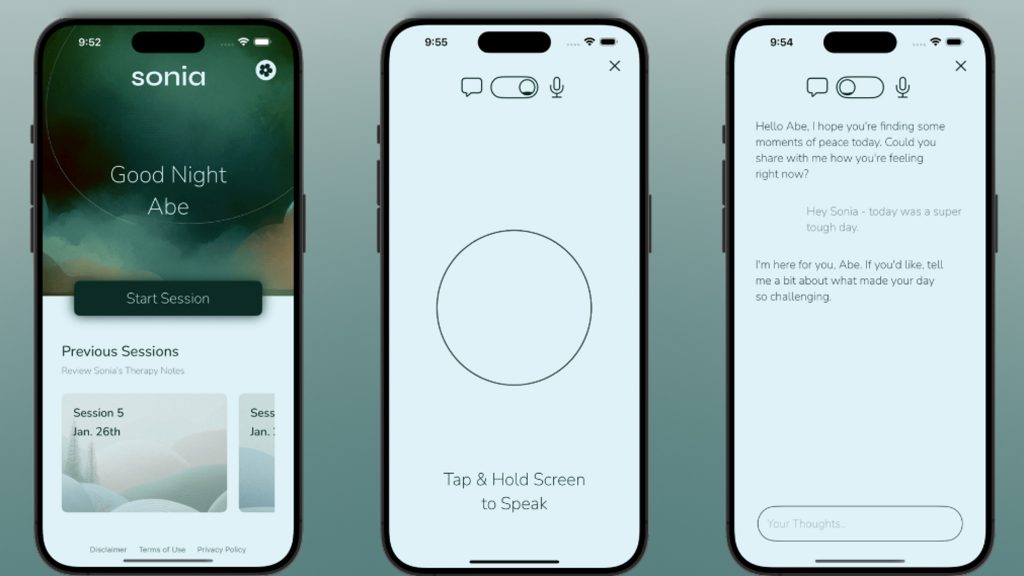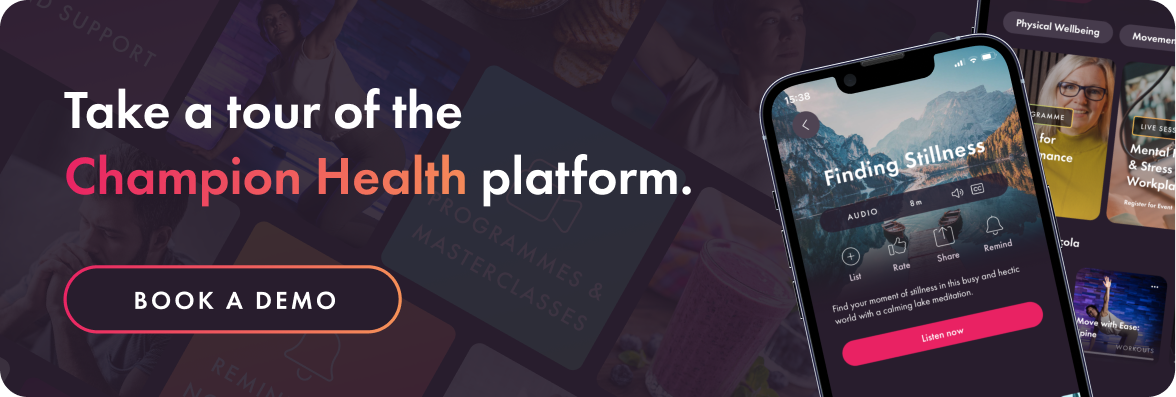What’s the first thing that comes to mind when you think of therapy?
Is it sitting in a room across from a therapist in an armchair? Being asked how certain events have made you feel? Revealing something you wouldn’t tell another soul and being met without judgement?
In all three of those scenarios, there is you and there is another person. A human you are looking at, talking to, connecting with.
Now, what about when you think of a chatbot? A robot? Programmed questions and answers? Restrictions and limitations? Faceless and lacking emotion?
Our perception of chatbots is changing by the day with the AI revolution – and it looks like our acceptance is going to need to expand even further.
Chatbot therapists are now a thing. Tools like Sonia and Ash are offering a way for people to get help quickly and for a fraction of the price.

This is great, right? We want this kind of availability and accessibility for every single person suffering with their mental health.
But can a chatbot really replace human connection? And more importantly, is it safe?
Let’s break it down and explore both sides.
The Upside
Around-the-clock help
Chatbot therapists are available 24/7, providing support whenever it’s needed. Imagine what this could do for someone in a crisis – when they can’t get hold of their therapist or seek help through public (or private) healthcare like the NHS or their local GP. This could prevent a crisis from turning into something even more serious.
Global reach
It doesn’t matter where they are in the world, users can access chatbot therapists from any location. This means not having to worry about driving somewhere or getting public transport (if it is even available). Help is at their fingertips.
Affordable support
We all know therapy can be incredibly expensive. Not everyone has insurance to cover it, and waiting lists through public healthcare can be eye-wateringly long. Chatbot therapy is usually much more affordable, lowering the financial barrier that can stop so many people from accessing crucial mental health support.
Comfort in anonymity
Sometimes people feel more comfortable and confident to open up about personal issues anonymously. Chatbot therapists are perfect for this and can also help reduce the stigma associated with seeking help. It can be the first step to finding support that works and has a long-term impact.
And then there is data. Reputable chatbot services ensure user data is encrypted and protected, creating a secure environment for users to share their concerns – which also provides psychological safety for users.
Instant responses
Closely linked to constant availability is the chatbot therapist’s ability to provide instant feedback and support. This is crucial when a user is in distress, feeling nervous or uncertain. It means they can get feedback and suggestions immediately, rather than having to wait to see a human therapist.
Consistent support
We all have days off – and so do therapists. They also experience unpredictable life events such as sickness, meaning that some days, weeks or months they can’t work. Chatbot therapists are not afflicted with these very human issues. They can offer consistent and unbiased responses based on their programming.
This also means that chatbot therapists can complement traditional therapy by providing support between sessions – like tracking patient progress, if coping strategies are working etc. This can give users’ human therapists insights to help them prepare for the next session.
Now, we hate to leave you on a cliffhanger, but you’ll have to tune in next week to discover the downside of chatbot therapy and find out what we think about this latest AI revolution in wellbeing…






